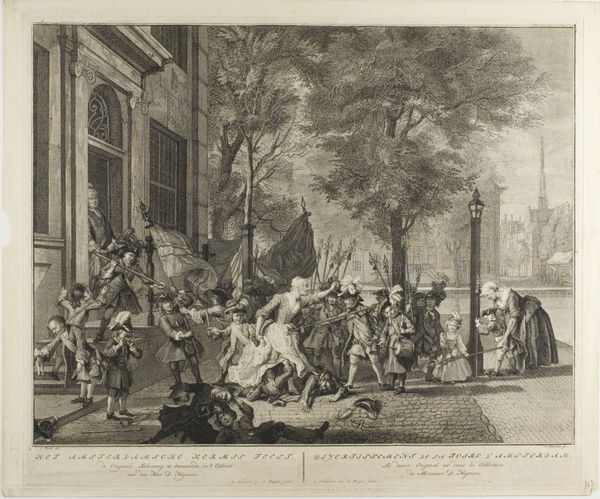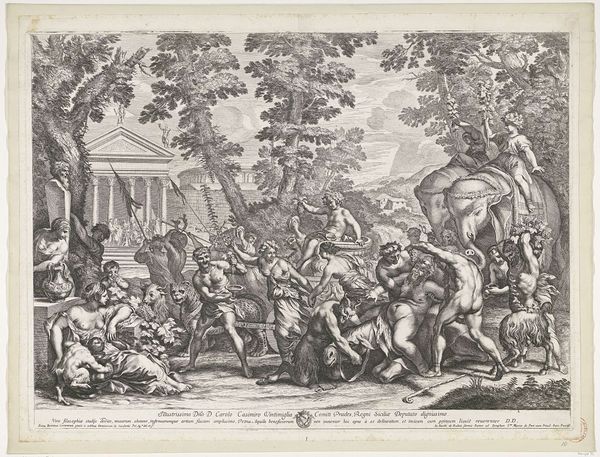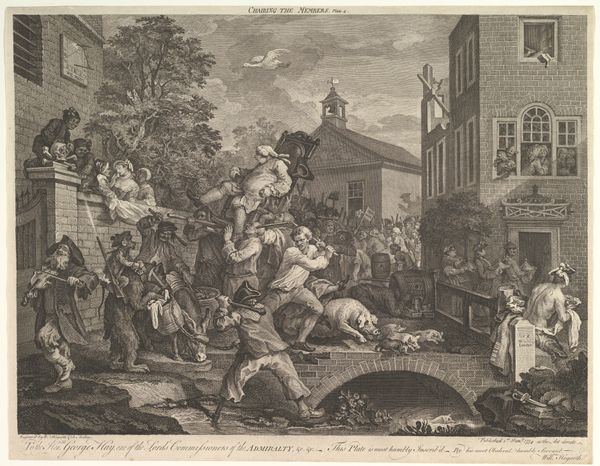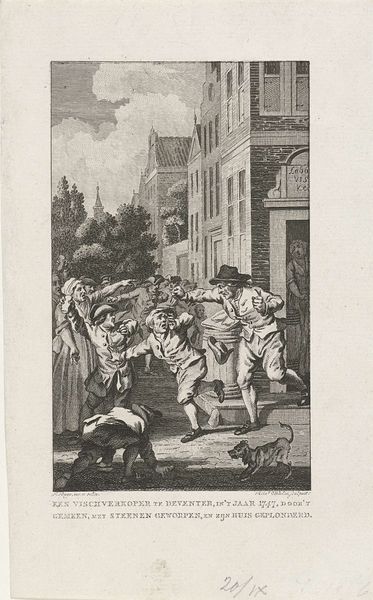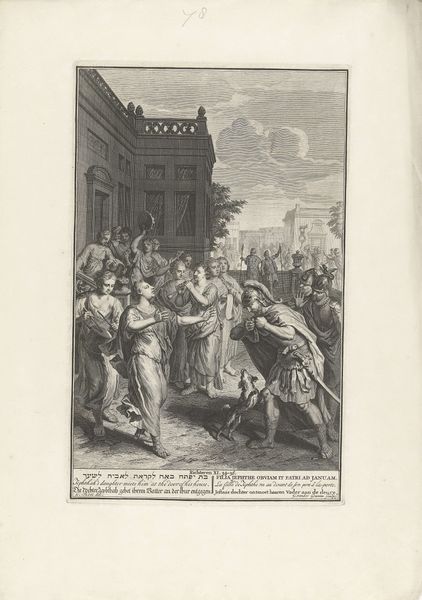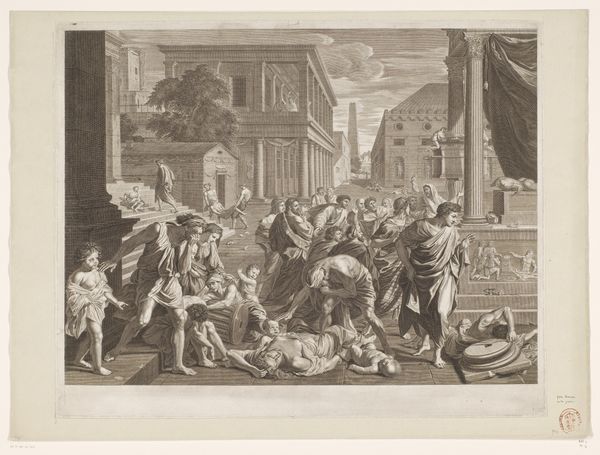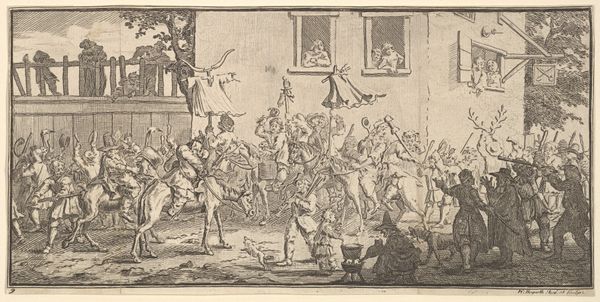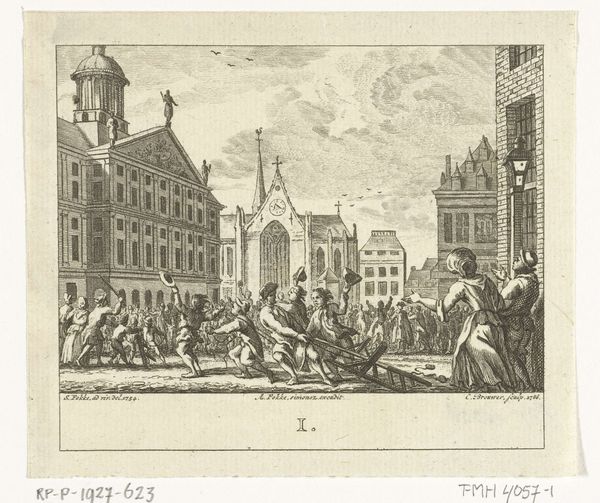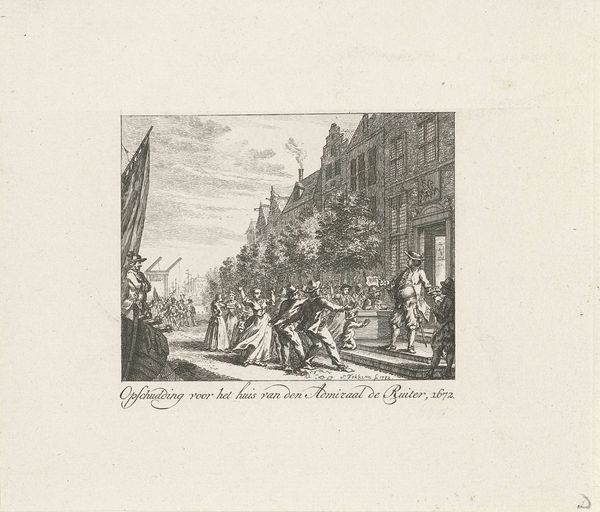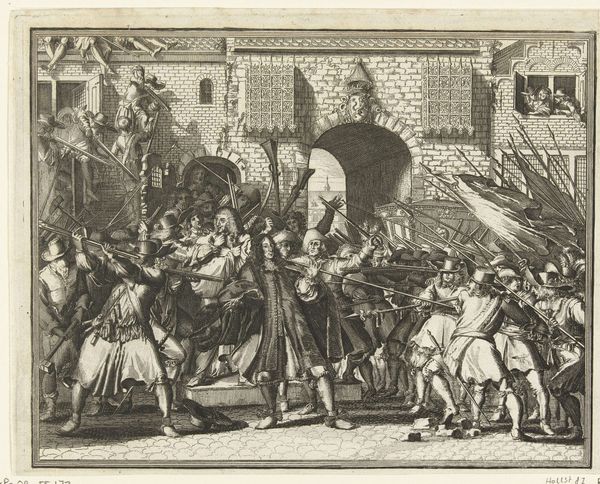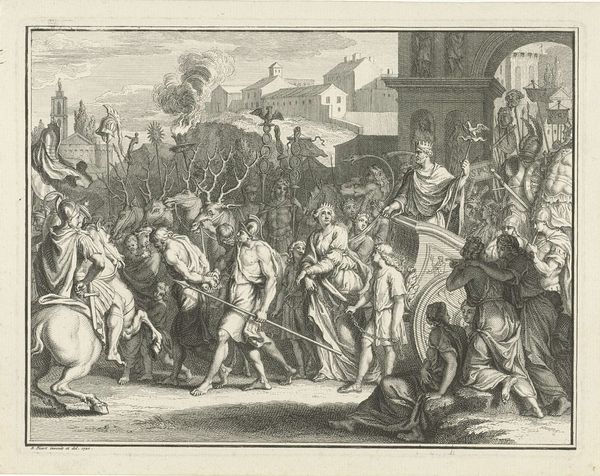
Dimensions: height 96 mm, width 114 mm
Copyright: Rijks Museum: Open Domain
Cornelis Brouwer made this etching, depicting the funeral of Daniël Raap in Amsterdam, in 1754. The print is made using etching, a printmaking technique, where Brouwer would have coated a metal plate with a waxy, acid-resistant substance called a ‘ground.’ He then scratched an image into the ground with a pointed tool, exposing the metal underneath. The plate would be submerged in acid, which bit into the exposed lines, creating grooves. Ink was applied to the plate, filling the grooves, and the surface was wiped clean. Finally, paper was pressed onto the plate, transferring the ink and creating the print. The nature of the medium meant that the lines could only be basic - it is a very linear technique. So the artist had to become adept at conveying tone, depth, and emotion through an essentially linear technique. This etching’s intricate details, from the somber procession to the architectural backdrop, tell a vivid story. Etchings like this one played a crucial role in disseminating information and artistic ideas in an era before mass media, offering a glimpse into the rituals and social structures of 18th-century Amsterdam.
Comments
No comments
Be the first to comment and join the conversation on the ultimate creative platform.
